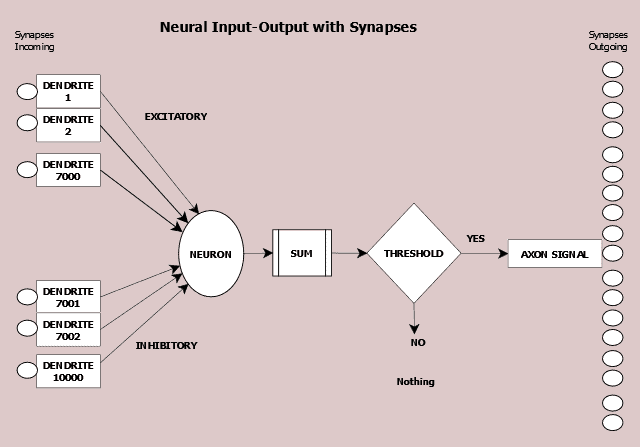Intuition and Reasoning
The brain can draw conclusions in either of two ways—logical or pattern-matching. Another way to express the choice is—by reasoning or by intuition.
Logical/reasoning, we’re all familiar with. We use facts and rules of logic to draw conclusions. This is an advanced mode of thinking that took many eons to evolve.
Pattern-matching/intuition, we all have some ideas about how it works, but words fail us. How appropriate! Pattern-matching does not work by words, facts, and logic. Pattern-matching is a match or no-match method. It occurs by summing up the neural inputs. If the result is high enough, that neuron triggers its axon to notify its downstream neighbors that a match has been found. That is the native mode of neural processing.

Facial recognition is the common and perhaps the most accessible example of pattern-matching. When we see a person, we might recognize a friend. That is the match part. This friend may have their hair done differently, they may have a cast on their wrist, and we may only see half of their face, but we recognize them even though the match is not perfect.
So what? Well, a pattern is more general than a pictorial image. E.g. the value of stock prices and inflation headlines combine with your changing 401K balance and the latest grocery to form a pattern in your brain. When a last bit of circumstantial data falls into place, you may declare you have a feeling that inflation is rising.
We do not choice between logic or pattern-matching. We use them together. The corpus callosum communicates the result of one hemisphere to the other repeatedly as information proceeds towards the frontal lobes. Pattern results (typically in the right hemisphere) are shared across to verbal, left hemisphere. The back-and-forth exchange allows us to use the best of intuition with the best of our reasoning, resulting in a stronger conclusion.
Features Matching
The number of features in a pattern that must align before one sees a match varies among people. The neuron’s firing threshold is determined by genetics, though it can be temporarily adjusted by neural modulators activated by stress or time constraints. Those people with a lower neural threshold require fewer features to match. They are more creative; however, that comes with the drawback of a higher rate of mistaken matches (that is, they may ignore features which turn out to be crucial).
Two Methods of Thinking
Diagram of Neural Input-Output with Synapse. Personal Notes



Do you believe the mind and the brain are the same thing?
The simplest answer is yes.
However, that does not mean that people don’t use the words ‘mind’ and ‘brain’ differently according to the aspect they are interested in.
All the aspects of mind will be ultimately be linked to the physical substance of neurons, synapses and the like. In Mental Construction I have developed the ideas further.